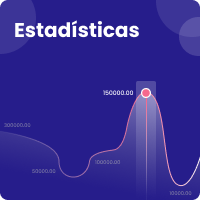Comparación de métodos de análisis de sentimientos en comunidades de habla hispana
DOI:
https://doi.org/10.26507/paper.2367Palabras clave:
Machine Learning, Deep Learning, lexicon, Twitter, Análisis de Subjetividad ColectivaResumen
Uno de los fenómenos de estudio que ha motivado a sociólogos, antropólogos, psicólogos y, en general, a investigadores interesados en las interacciones humanas y los alcances de la comunicación lo constituye el Análisis de Subjetividad Colectiva. Las redes sociales son actualmente la principal plataforma para “escuchar” modos de pensar, actuar y sentir (PAS) entre usuarios en la Web con una infinidad de retos computacionales para determinar información útil. Por ello, analizar el sentimiento como un aspecto del lenguaje usado para expresar los estados mentales y emocionales o “estados privados”, que no pueden ser directamente observados, representa un aporte significativo para analizar la subjetividad colectiva. El presente artículo compara el desempeño de modelos de aprendizaje de máquina clásico, aprendizaje profundo y modelos basados en lexicones con el fin de establecer una metodología para analizar los PAS de las comunidades de habla hispana que puedan contribuir al análisis de subjetividad colectiva. Con este propósito, se utiliza un corpus de Twitter proveniente de la competencia TASS2019 para el idioma español. El enfoque de aprendizaje profundo obtuvo los mejores desempeños con los artículos de los principales periódicos en los 32 departamentos de Colombia.
Descargas
Citas
Chandra, R., & Krishna, A. (2021). COVID-19 sentiment analysis via deep learning during the rise of novel cases. PLOS ONE, 16(8 August).
Chiruzzo, L., Etcheverry, M., & Rosá, A. (2020). Sentiment analysis in Spanish tweets: Some experiments with focus on neutral tweets. Procesamiento de Lenguaje Natural, 64, 109–116
Kamyab, M., Liu, G., & Adjeisah, M. (2021). Attention-Based CNN and Bi-LSTM Model Based on TF-IDF and GloVe Word Embedding for Sentiment Analysis. Applied Sciences (Switzerland), 11(23).
Molina-González, M. D., Martínez-Cámara, E., Martín-Valdivia, M. T., & Perea-Ortega, J. M. (2013). Semantic orientation for polarity classification in Spanish reviews. Expert Systems with Applications, 40(18), 7250–7257. https://doi.org/10.1016/j.eswa.2013.06.076
Moreno-Sandoval, L. G., Pomares-Quimbaya, A., & Alvarado-Valencia, J. A. (2021). Celebrity profiling through linguistic analysis of digital social networks. Computational Social Networks, 8(1). https://doi.org/10.1186/s40649-021-00097-w
Osorio Angel, S., Peña Pérez Negrón, A., & Espinoza-Valdez, A. (2021). Systematic literature review of sentiment analysis in the Spanish language. Data Technologies and Applications, 55(4), 461–479. https://doi.org/10.1108/DTA-09-2020-0200
Puertas, E., Moreno-Sandoval, L. G., Redondo, J., Alvarado-Valencia, J. A., & Pomares-Quimbaya, A. (2021). Detection of Sociolinguistic Features in Digital Social Networks for the Detection of Communities. Cognitive Computation, 13(2), 518–537.
Sun, S., Luo, C., & Chen, J. (2017). A review of natural language processing techniques for opinion mining systems. Information Fusion, 36, 10–25.
van Paridon, J., & Thompson, B. (2021). subs2vec: Word embeddings from subtitles in 55 languages. Behavior Research Methods, 53(2), 629–655.
Bird, S., Klein, E., & Loper, E. (2009). Natural Language Processing with Python O’Reilly Media.
Nankani, H., Dutta, H., Shrivastava, H., Rama Krishna, P. V. N. S., Mahata, D., & Shah, R. R. (2020). Multilingual Sentiment Analysis (pp. 193–236).
Graves, A., & Schmidhuber, J. (2005). Framewise Phoneme Classification with Bidirectional LSTM Networks. Proceedings of International Joint Conference on Neural Networks, Montreal, 2047–2052.
Harjule, P., Gurjar, A., Seth, H., & Thakur, P. (2020). Text Classification on Twitter Data. Proceedings of 3rd International Conference on Emerging Technologies in Computer Engineering: Machine Learning and Internet of Things, ICETCE 2020, 160–164.
Moreno-Sandoval, L. G., Beltrán-Herrera, P., Vargas-Cruz, J. A., Sánchez-Barriga, C., Pomares-Quimbaya, A., Alvarado-Valencia, J. A., & García-Díaz, J. C. (2017). CSL: A Combined Spanish lexicon: Resource for polarity classification and sentiment analysis. ICEIS 2017 - Proceedings of the 19th International Conference on Enterprise Information Systems, 1, 288–295.
Ochoa-Luna, J., & Ari, D. (2018). Deep neural network approaches for Spanish sentiment analysis of short texts. Lecture Notes in Computer Science (Including Subseries Lecture Notes in Artificial Intelligence and Lecture Notes in Bioinformatics), 11238 LNAI, 430–441.
Tan, Y. (2018). An Improved KNN Text Classification Algorithm Based on K-Medoids and Rough Set. Proceedings - 2018 10th International Conference on Intelligent Human-Machine Systems and Cybernetics, IHMSC 2018, 1, 109–113.
Utitiaj, I., Morillo, P., & Huanga, D. V. (2020, December 24). Sentiment Analysis Tool for Spanish Tweets in the Ecuadorian Context. ACM International Conference Proceeding Series.
Villena, J., Daedalus, R., Lana-Serrano, S., Martínez-Cámara, E., & Carlos González-Cristóbal, J. (2013). TASS-Workshop on Sentiment Analysis at SEPLN TASS-Taller de Análisis de Sentimientos en la SEPLN. Procesamiento Del Lenguaje NaturaL, 50, 37–44.
Data Science Lab. (n.d.). Multilingualsentiment. Sites.Google.Com. Retrieved May 18, 2022, from https://sites.google.com/site/datascienceslab/projects/multilingualsentiment
Facebook Inc. (2022). fastText: Word representations. Fasttext.Cc/. https://fasttext.cc/docs/en/unsupervised-tutorial.html
Pedregosa, F., Michel, V., Grisel OLIVIERGRISEL, O., Blondel, M., Prettenhofer, P., Weiss, R., Vanderplas, J., Cournapeau, D., Pedregosa, F., Varoquaux, G., Gramfort, A., Thirion, B., Grisel, O., Dubourg, V., Passos, A., Brucher, M., Perrot andÉdouardand, M., Duchesnay, andÉdouard, & Duchesnay EDOUARDDUCHESNAY, Fré. (2011). Scikit-learn: Machine Learning in Python. In Journal of Machine Learning Research (Vol. 12). http://scikit-learn.sourceforge.net.
Perez, V., Banea, C., & Mihalcea, R. (n.d.). Sentiment Lexicons in Spanish. Web.Eecs.Umich.Edu. Retrieved May 18, 2022, from http://web.eecs.umich.edu/~mihalcea/downloads.html#SPANISH_SENT_LEXICONS
Randim Řehůřek. (2009). GENSIM: topic modelling for humans. Radimrehurek.Com. https://radimrehurek.com/gensim/auto_examples/tutorials/run_doc2vec_lee.html#sphx-glr-auto-examples-tutorials-run-doc2vec-lee-py
Roales González, N, (2014), DETECCIÓN DE TENDENCIAS EN TWITTER UTILIZANDO MINERÍA DE DATOS ADAPTATIVA, Universidad Autónoma de Madrid. https://repositorio.uam.es/bitstream/handle/10486/662510/roales_gonzalez_natalia_tfg.pdf?sequence=1
Secretaria de Estado de Investigación Desarrollo e Innovación. (2011). iSOL. Timm.Ujaen.Es. http://timm.ujaen.es/recursos/isol/
Swysen, T. (2020). Swysen2020. Universidad de Chile.
Descargas
Publicado
Cómo citar
Evento
Sección
Licencia
Derechos de autor 2022 Asociación Colombiana de Facultades de Ingeniería - ACOFI

Esta obra está bajo una licencia internacional Creative Commons Atribución-NoComercial-SinDerivadas 4.0.
| Estadísticas de artículo | |
|---|---|
| Vistas de resúmenes | |
| Vistas de PDF | |
| Descargas de PDF | |
| Vistas de HTML | |
| Otras vistas | |








